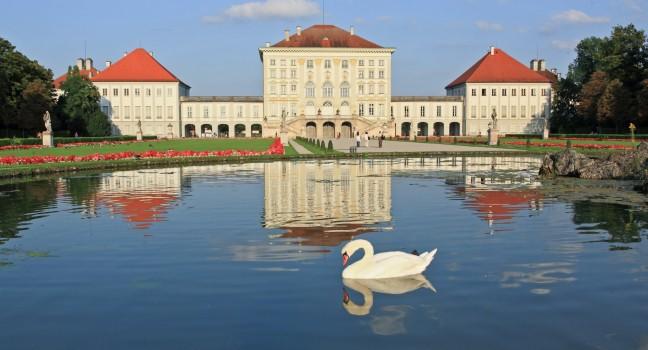Fodor's Expert Review Schloss Nymphenburg

This glorious Baroque and Rococo palace, the largest in Germany, grew in size and scope over more than 200 years. Begun in 1662 by the Italian architect Agostino Barelli, it was completed by his successor, Enrico Zuccalli. It represents a tremendous high point of Italian cultural influence, in what is undoubtedly Germany's most Italian city. Within the original building, now the central axis of the palace complex, is the magnificent Steinerner Saal (Great hall), extending over two floors and richly decorated with stucco and grandiose frescoes by masters such as François Cuvilliés the Elder and Johann Baptist Zimmermann. One of the surrounding royal chambers houses Ludwig I's famous Schönheitsgalerie (Gallery of Beauties), portraits of women who caught his roving eye. The palace park is laid out in formal French style, with low hedges and gravel walks extending into woodland. Among the ancient trees are three fascinating pavilions, including the Amalienburg hunting lodge by François... READ MORE
This glorious Baroque and Rococo palace, the largest in Germany, grew in size and scope over more than 200 years. Begun in 1662 by the Italian architect Agostino Barelli, it was completed by his successor, Enrico Zuccalli. It represents a tremendous high point of Italian cultural influence, in what is undoubtedly Germany's most Italian city. Within the original building, now the central axis of the palace complex, is the magnificent Steinerner Saal (Great hall), extending over two floors and richly decorated with stucco and grandiose frescoes by masters such as François Cuvilliés the Elder and Johann Baptist Zimmermann. One of the surrounding royal chambers houses Ludwig I's famous Schönheitsgalerie (Gallery of Beauties), portraits of women who caught his roving eye. The palace park is laid out in formal French style, with low hedges and gravel walks extending into woodland. Among the ancient trees are three fascinating pavilions, including the Amalienburg hunting lodge by François Cuvilliés. It's also worth visiting the former royal stables, now the Marstallmuseum, which houses a fleet of carriages, coaches, and sleighs. In its upper rooms are examples of the world-renowned Nymphenburg porcelain, the electoral porcelain factory founded by Max III Joseph in 1747.
READ LESS







